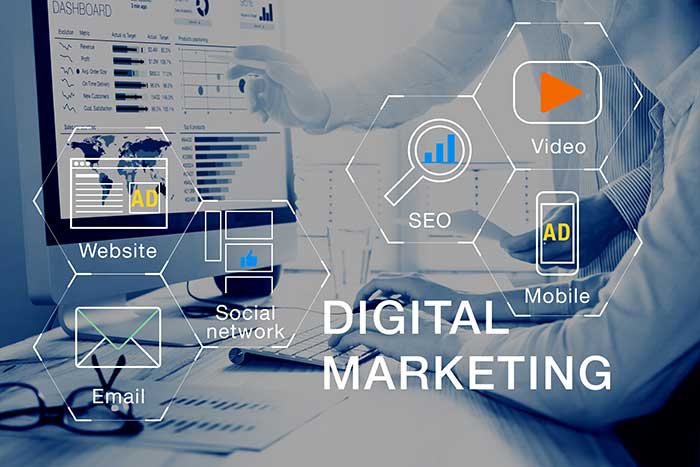
Any good marketer knows that data ultimately decides whether marketing campaigns are successful or not. To help organizations make informed marketing decisions, you have to quantify, measure, and analyze the metrics to understand the impact of marketing efforts. Two of the essential metrics that any digital marketer should look at are reach and impressions.
Traditionally, reach reflected every unique user that could be exposed to your advertisement. A tv station, radio station, or newspaper publisher would quantify their viewership, listener base, and readership as “the reach.” An advertiser would approach a media house that would, in turn, sell them a percentage of the consumers of their content, say in predefined age groups, as “the reach” for the company’s ad campaign.
Digital media came to disrupt the traditional way of doing things. Today, “reach” is defined as the total number of unique viewers of your advertisement and content.
Of course, it is not easy to define digital reach without first discussing impressions. There is some confusion when it comes to differentiating reach and impressions. Impressions are the total number of times your content is displayed to your audience, whether they click on it or not. Reach, on the other hand, is the total number of unique viewers of your content.
Let’s take an example of a YouTube channel that uploads a video to its one hundred subscribers. If all the subscribers watch the video, they will reach one hundred and also have 100 impressions. If the same YouTube channel publishes two videos on the next day, they will have a reach of one hundred, but this time their impressions will be two hundred. The impressions are two hundred because every single one of your subscribers saw your channel twice.
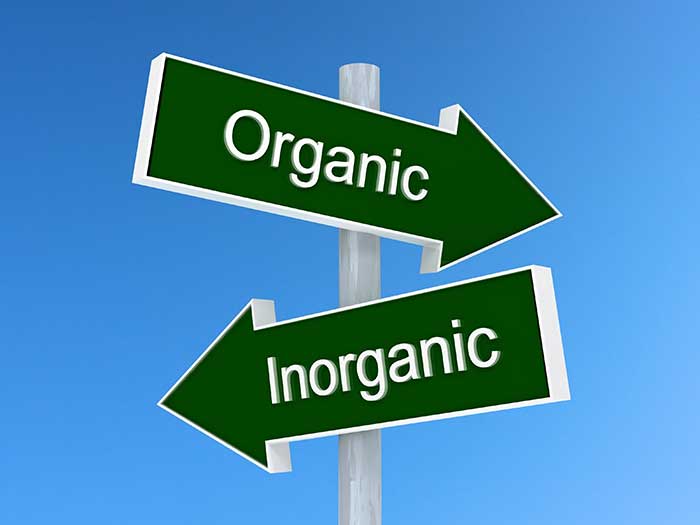
Organic Reach
The number of users your post or advertisement reaches without any paid support from the advertising platform is known as organic reach. Organic reach increases when your followers interact with your post by liking, commenting, or sharing it. The more your audience engages with your content, the more the organic reach gained from these interactions. Organic reach can grow exponentially, especially if your content is engaging and your audience shares it with their followers, who in turn share it with their followers.
Even though most digital media platforms have moved away from “free for all” models to “pay to play” systems, the organic reach can still be significant to advertising efforts. As an advertiser, the audience you can get to organically tells a lot about how the whole campaign will perform. In Facebook, for example, one in every nineteen fans is reached by non-promoted content. That number might seem insignificant but holds a lot of weight. As an advertiser, you should grow your organic reach to benefit from non-paid promotions.

Learn the best practices for each platform
No “one size fits all” templates will work for every social media platform. For your posts to reach the most people organically, you need to optimize each post to suit each platform you intend to use. A video optimized for YouTube will more than likely perform worse on Instagram.
Based on your target demographic, post to platforms that make the best sense. For example, TikTok, Snapchat, and Instagram have a younger user base than LinkedIn and Facebook.
Generally, content customized for the platform is going to perform better. Master the inner workings of each platform you intend to use for your digital marketing efforts.
Develop a content strategy
There are no shortcuts to make your social media content perform well organically. It would be best to put some thought into all the ads you make to get people to engage with you. Learn about your audience. Learn their interests and demographics. Most social media sites allow for a business account to manage these insights.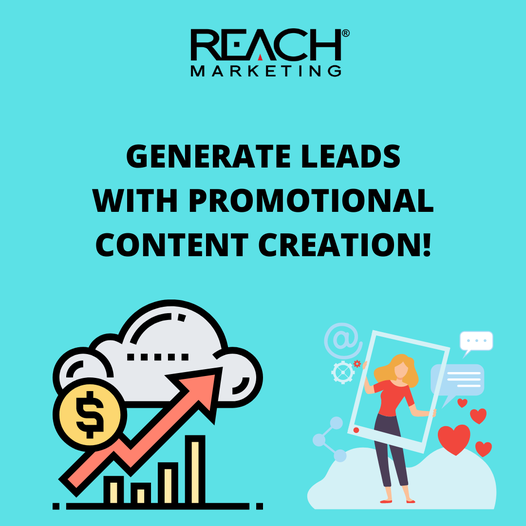
If you push sales all the time, you will not grow your organic audience. Likewise, you will not boost your sales this way either. If you want to realize any growth, you must develop a concrete content strategy.
Focus on value
All organic content should offer the viewer something of value. That is the only way they will engage and share it with their followers. Value could be in the form of entertainment, education, pearls of wisdom, or information. You must ensure that your organic content is not only relevant but is of great value to your audience.
Providing value will help place your brand into the daily routines of your customers.
Be consistent
It goes without saying that for success in any venture, you need to have consistency. The same applies to growing your organic reach. Learn the best times to post to numerous social media sites. Use the insights provided by the platforms to adjust your content appropriately.
Consistency in posts and updates grows and establishes your reach. You do not have to have numerous posts daily; all you need are a few quality posts delivered consistently.
As a business, all your efforts should be focused on growing your reach and on the long-term.
Connect with people
It is no secret that people follow people. Posts with people in them attract more likes than those without people. Your audience will not respond to posts that feel like a machine developed them. Your posts should always be inclusive and representative so that your audience can identify with your brand. People engage with content that they can see themselves in.
Brands that put efforts to connect with people grow faster than those that focus on sales. If your sole focus is to sell, you might end up losing both the sales and your organic reach.
Call for engagement
Are you looking for more engagement from your followers? Then ask for it.
Posts that lead with questions will often get answers to them. Ask your audience members what they want to hear about. This will help you add to the insights, and you can learn more about the demographic.
Every platform has an optimum way of collecting user opinions. LinkedIn has a feature that allows you to hold polls. All other platforms allow you to ask questions and get feedback from the comment section.
Respond fast and often
People are more likely to engage in pages where they are sure to get responses back. After you make a post, stick around the comment section for a while to answer some of your audience’s questions. You can take the opportunity to promote your brand’s values by educating your users on them. If you see any abusive or inappropriate comments, address them promptly to increase inclusivity.
Responses to comments and questions are proven ways to increase post engagement. Comments that do not get responses to their posts are not likely to recommend brands to their friends. Customers spend more time on pages that respond to them.
Know all the algorithms
Social media content is ranked by algorithms that take multiple factors into account including, timeliness and relevance. These algorithms will prioritize posts based on whether they will be engaging or not.
On Facebook, for example, posts with videos or pictures tend to be better ranked than those with plain text. Videos are the best-ranked type of content, followed closely by animated GIFs and pictures. This is true for most platforms; therefore, take the time to understand how each platform treats content and ranks it appropriately.
Collaborate and tag
Tagging and collaborating is an excellent way of increasing the visibility of your organic posts. You could collaborate with other accounts to promote your brand. These accounts might be those of other like-minded creators, other brands, or even customers. Collaborations help spark engagement and grow the brands’ organic reach by exposing them to various new audiences.
Stage virtual events
Virtual events may sound a little futuristic, but they have been happening since the early nineties. Moving an event to the digital space reduces costs and exposes your brand to an audience you could never have access to otherwise.
Virtual events can take the form of interviews and performances, conferences, shows, pieces of training, and courses. Some creative companies have held behind-the-scenes tours that have positively exposed their brands to even greater heights in terms of reach and sales.
If you are creative, you can achieve a lot of success by growing your organic reach without spending any money.
Inorganic Reach
Organic reach is great for any business, but organic reach alone is insufficient to take it to the next level.
Nowadays, most social media platforms do not promote organic content as they do paid content. Every business should therefore set aside a budget to use for advertising.
Paid reach helps your brand earn viewership that you could never get organically. This newfound viewership can be a good way to rapidly increase your following online, especially for new brands or those that do not have a presence on these platforms.
Some benefits of using inorganic methods to improve your reach include instant traffic, more robust return on investment, and increased brand awareness. You also get access to premium tools that you could otherwise not have obtained with just the platforms’ organic versions.
There are multiple ways to increase your reach inorganically. These include the following.
Search Engine Marketing
Search engine marketing involves paying for your content to rank higher on the results of search engines like Google, Yahoo, or Bing. Your content will appear on the list above the organic results. Search engine marketing is more effective when you employ organic search engine optimization to help your content rank even higher on the paid search results.
Search engine marketing will help you target customers based on what they are searching for online.
Search engine marketing primarily utilizes the pay-per-click advertising model.
Social Media Advertising
All social media platforms have strongly curated advertising platforms that are fashioned to target the platform users are interested in. This is different from search engine marketing which targets what the user is looking for.
Social media advertising utilizes both pay-per-click and pay-per-impression models of advertising. They also offer better segmentation of demographics and targeting models.
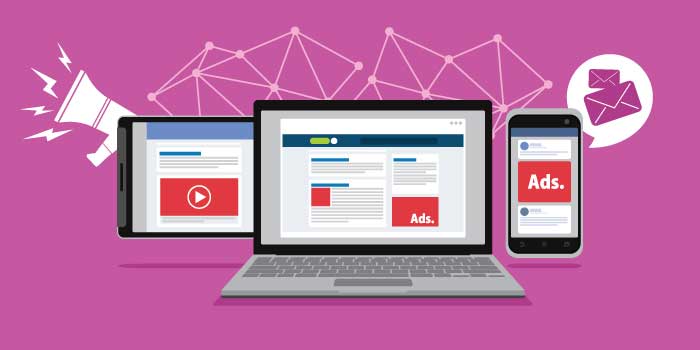
Display Advertising
Display advertising helps brand showcase their presence online by displaying on sites that users visit. This is usually in the form of banner ads shown on websites that the target audience visits.
Display advertising is vital for any brand that wants to stick in the minds of its target audience as people spend most of their day working online or browsing the internet.
Display advertising usually employs the pay-per-click model.
Retargeting and Remarketing
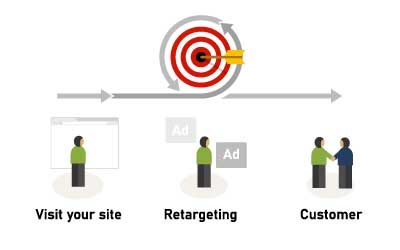 Retargeting involves installing cookies on a user’s device and then using them to show ads to them around different sites across the internet. Retargeting has more than a few privacy concerns. Websites try to overcome these concerns by asking their users to accept cookies when they first visit.
Retargeting involves installing cookies on a user’s device and then using them to show ads to them around different sites across the internet. Retargeting has more than a few privacy concerns. Websites try to overcome these concerns by asking their users to accept cookies when they first visit.
Retargeting has the best returns and lowest barriers to entry of all paid reach tactics.
Although retargeting and remarketing have been used interchangeably, they mean different things. While retargeting involves following your audience around the internet, remarketing involves marketing again to people who have interacted with your brand online in the past.
Native Advertising
Native advertisements are advertisements that are customized to match the platform where the ads will be placed. Examples of native advertisements are Facebook or Instagram advertisements that require the advertiser to stick to a template. These advertisements are usually indistinguishable from organic content save for the “sponsored” tag below such posts.
Most platforms are pushing advertisers to adopt native advertisements claiming that they perform better and fit in better to the user’s experience on the platform.
Ways to Improve Your Paid Reach
Although paid reach can grow your reach considerably, you can improve your inorganic reach by following proven strategies. Some ways you can improve your paid reach include:
Work with Influencers
It is not very compelling and convincing for a brand to be the only one praising the greatness of its products. It helps when someone influential in the industry reviews, gives walkthroughs and how-tos and talks positively about your product.
Influencers are viewed as experts in a particular field and have a large following on social media. They have taken the time to build trust from their followers. A recommendation from an influencer will go a long way to serve as social proof for your product or brand.
When deciding to work with influencers, make sure that they are authentic and provide genuine experiences with your products. People would much rather watch a fifteen-minute-long video from an influencer rather than a five-minute video from a brand talking about the same product. People tend to gravitate to the content they can relate to, and influencers make it possible for them to do just that. People follow people.
Set up full retargeting campaigns
Retargeting helps to turn casual website browsers into full-paying customers. Most of the people who visit websites are not ready to buy the first time around. Thus, retargeting helps to convert these prospects into customers. Retargeting makes your product sticky.
People are spending more time on their devices. Thus, creating better opportunities for marketers to serve them with advertisements that they have shown interest in. Although retargeting requires considerably less effort than other types of online marketing, it is best to analyze and optimize your efforts to become more efficient.
Publish sponsored ads
Sponsored content helps put your company in places where people are looking. What would take you eons to organically achieve can sometimes be done quickly and easily with a few dollars of spend.
Sponsored content is more effective when it is at the intersection of native advertisements and branded content. Unlike native advertisements, which conform to the template set by the platform, sponsored advertisements can take many forms.
Create Custom Landing Pages
A landing page is designed to do one thing exceptionally well; capture the attention of a would-be buyer. Before deploying landing pages, you need to:
 Know your goal
Know your goal
Are you looking to expand your reach by reaching out to new people? New people are intrigued by your product and want to learn more, and your landing page should pique their newfound interest in you so that you can move them along the customer journey.
Are you looking to engage with existing customers? Just like a loving marriage, it might get boring if you don’t keep things spicy. If your goal is to thrill existing customers, then your landing pages should invite your customers to deals and offers to keep them focused on the brand.
Is your goal to convert your prospects? Back to the dating analogy, your prospects are like you have been dating but haven’t decided if they are the one. Keep them engaged with emails and blog posts.
Create a compelling reward
What will your audience gain when they click that link? Every landing page should be rewarding to the users. Offer your audiences rewards like webinars, product demos, eBooks, and whitepapers.
Use social proof
If your product works, then shout about it. Your audience is more likely to buy when there are testimonials and positive reviews. Your landing pages should brag about your positive reviews to enhance your brand credibility.
Keep your message short and clear
A landing page should only contain the necessary information to pass your message across. Show your readers how signing up is the best decision of their life without telling them your life’s story.
Have an actionable call to action
Your readers should know what will happen when they click the call-to-action button. Using the right words in the call to action on your landing page, you can increase conversion by a considerable factor. The call to action needs to force the user to take a step. Instead of “learn more,” use “get your free eBook here.”
Follow up on the post-conversion
What happens when they sign up? Ensure that the post-conversion experience is top-notch.
Ensure you set up nurturing email campaigns with vital information. Make sure the next steps in the journey are explained to the customer or prospect. Ensure that you build and keep the trust of your prospects and customers by being honest and reliable. Respect their privacy and be open to their preferences for communication.
Design your websites, landing pages, and ads to fit mobile devices as well as desktops

Mobile traffic recently passed that of their desktop counterparts in terms of volume. As a marketer, you should pay very close attention to the designs of your websites, so you do not lose customers who prefer to communicate through mobile devices.
Nowadays, more people consume information through their mobile phones than any other devices they own. It used to be that to access certain platforms, you had to sit behind a computer screen, but that is no longer the case. You should optimize your websites and advertisements for every platform available and for every type of device that your audience uses.
Marketing Reach Is Essential
To sum up, as a marketer, you cannot ignore marketing reach. It is one of the most important metrics when defining the scope of success of any marketing campaign efforts. Both organic and inorganic reach is vital for every brand and plays a part in creating awareness in their unique way. Growing your marketing reach can offer huge returns on investment for your brand if managed well.
There is no turnkey solution for managing or growing your reach, but the principles laid out here are critical to any successful digital marketing venture. And as is always said in marketing, “test, test, test.” If you have already implemented these in your strategies, you are on your way. If you are just starting to understand the digital space, it will require patience to get results, and your rewards will come with consistency.